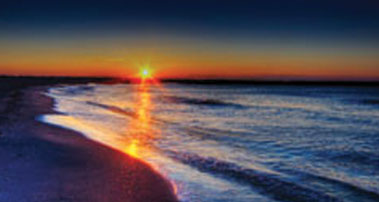The Seasons of the Year:
While most people experience the four seasonal changes of spring, summer, fall and winter, they seldom give a thought to the astronomical, cultural or religious importance of the dates. Yet in ancient times, most civilizations used the sun, moon, planets and stars to record the passage of time. The earliest known Egyptian calendar, influencing the Mayan and the Celtic, was based on the moon’s cycle over a calendar year. Tracking the movement of the sun, moon, Venus and the star Sirius, an intricate calendar system governed the natural rhythms of the earth. According to those calendars, eclipses were noted, fields were planted or harvested and cycles of birth and death were understood.
The four major seasons were called Equinoxes or Solstices. On the Equinoxes (which mean “equal night”) the sun hovers over the equator assuring that every place on earth experiences equal hours of daylight and darkness. The Spring Equinox (March 20th) signaled the time to plant seeds for the summer’s growth season while in the Autumnal Equinox (September 21st) the crops were harvested.
The Solstices, on the other hand, were times of extreme – either seemingly endless days of light or darkness. The Solstice means “the sun stands still.” During those two days, the tilt of the earth’s axis was either turned towards the sun or away from it. During the Summer Solstice (June 20th) the crops were at their fullest. With the sun high in the sky the longest day of the year was recorded. On the Winter Solstice (Dec. 21st) the opposite occurs. The crops have been long harvested and the fields made fallow. During this time the earth’s axis is tilted away from the sun, so that darkness is on the land for a much longer period of time.
During ancient times, the start of each season was a time of celebration, ritual, and ceremony, whether it was planting, cultivating or harvesting the bounty of the earth. Fires were lit, invocations were offered by the priests or priestesses, and a feast of thanksgiving was shared by all. Modern cultures usually don’t celebrate the seasons the way our ancestors did.

Winter Solstice – New Year
The Winter Solstice is the most important time of the year. At this time the light of the sun is diminished and it appears as though darkness will prevail on earth. Yet all cultures, knowing the sun’s light would be reborn on this day, considered it the start of the New Year. There are more religious holidays at this time of year than at any other. Most major religions celebrate holy days filled with light during December. For example: Hanukah (Jews), Devali (Hindus) Christmas (Christians), Kwanzaa (African culture), Yule (Wiccan), Maidyarem (Zorastrian.)
This year, the Winter Solstice of December 21, 2010 is auspicious. Not only is it the longest day of darkness, but it’s also the night of a full Lunar Eclipse, the last eclipse of 2010.
Here in the northern hemisphere, as the Sun “dies,” its light retreats into the longest night of the year. On a full Lunar Eclipse the moon goes dark as well. With all light dimmed on earth that evening, it gives us a chance to go within, releasing the flaws or behavioral characteristics that no longer serve us, and with the rebirth of the sun, focus on our personal transformation.
The Ceremony: The Sarasota community is invited to “The Tree” on Siesta Key Beach as we tune into the dark night of the earth, sun and moon. In sacred ceremony we will acknowledge the darkness within us, while summoning light to illuminate our consciousness. Spiritual leaders in the community will guide the ceremony which begins at 5 pm. Ceremonial highlights include Hindu, Celtic, Balinese and Native American blessings intoned to the sound of Gongs. Crystal Bowls will accompany a guided meditation. The Gulf waters will be blessed sending out prayers of healing across the waters of the planet. Drummers and singers are invited to participate. A fire dance will end the evening.
What to Bring: Please bring candles in protective holders, any sacred objects that you’d like to place on the altar, as well as chairs or blankets to sit on and flashlights as it will be dark when we leave the beach.
Special Collection – Mayors’ Feed the Hungry: The Women’s Meditation Group sponsors an annual collection effort on behalf of the Mayors’ Feed the Hungry Program. This program feeds a holiday meal to needy families in Sarasota and Manatee counties.. $10 feeds one person while $50 feeds a family of four. Attendees are asked to please consider a tax deductible contribution. Checks should be made payable to the Mayors’ Feed the Hungry Program.
Jo Mooy has studied at The Association for Research and Enlightenment, The Rosicrucian’s, Builders of the Adytum, Paramahansa Yogananda’s Self Realization Fellowship, Lucis Trust, the Sufi Order International, and Jonathan Goldman’s International Sound Healers Association. Jo writes and publishes an internationally distributed weekly newsletter called Spiritual Connections and facilitates a Women’s Meditation Group in Sarasota. For more information contact Jo Mooy at 941-866-5752 or jo@starsoundings.com.





